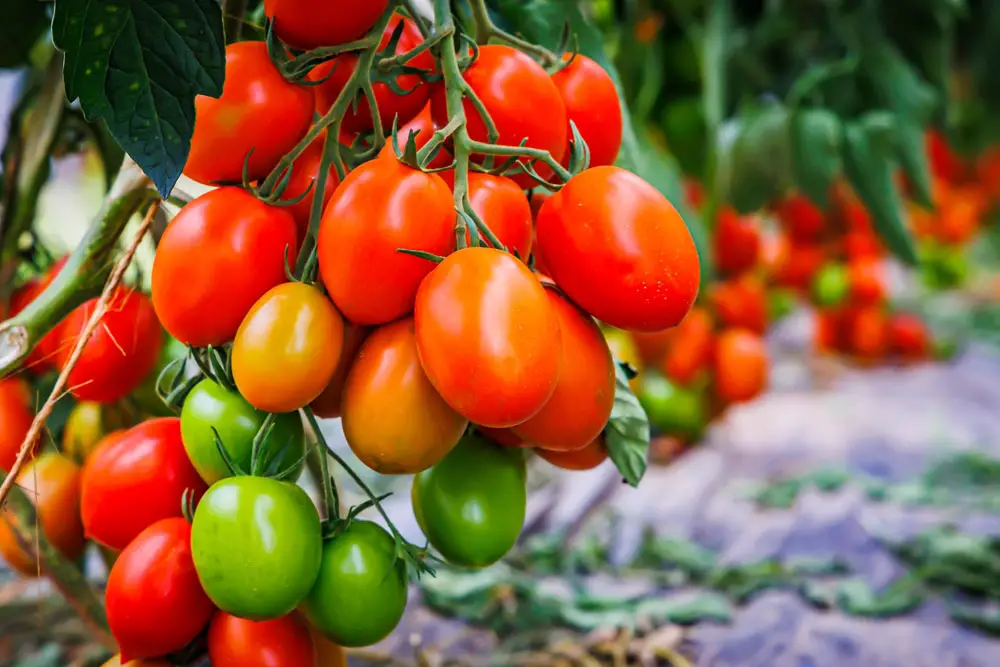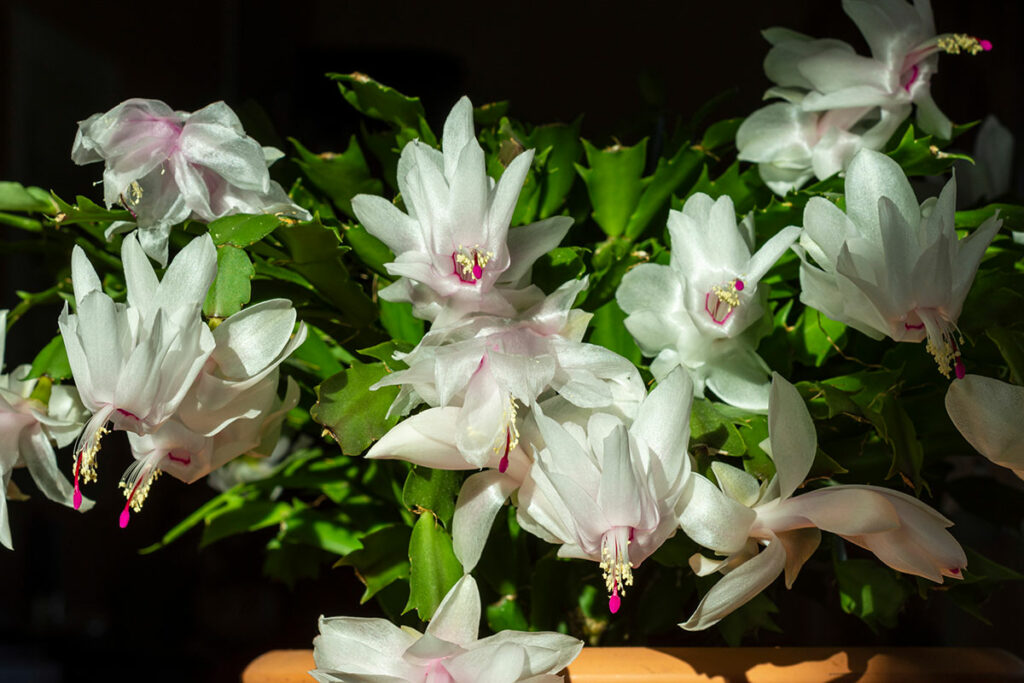
Tomatoes are a popular and versatile ingredient in many dishes, but they can be frustrating to grow.
One of the most common problems gardeners face is tomatoes splitting and cracking. This can happen for a variety of reasons, including uneven watering, extreme weather conditions, and genetic factors.
Fortunately, there are steps you can take to prevent this problem and ensure a bountiful harvest.
To start, it’s important to understand why tomatoes split and crack in the first place. When a tomato plant receives too much water too quickly, the fruit can expand faster than the skin can handle, causing it to split.
Similarly, if the plant experiences a sudden drought followed by heavy watering, the fruit can become stressed and crack.
Genetic factors can also play a role, as some tomato varieties are more prone to splitting than others. By understanding these factors, gardeners can take steps to prevent splitting and cracking and enjoy a successful tomato harvest.
There are several strategies gardeners can use to prevent tomatoes from splitting and cracking. These include consistent watering, mulching, and selecting the right tomato varieties.
By watering tomato plants deeply and consistently, gardeners can help prevent sudden changes in moisture levels that can cause fruit to split.
Mulching around the base of the plant can also help regulate soil moisture and prevent evaporation. Finally, selecting tomato varieties that are less prone to splitting and cracking can help ensure a successful harvest.
Why Tomatoes Split & Crack
Tomatoes are a popular and versatile crop that can be grown in many different climates. However, one of the most common problems that gardeners face when growing tomatoes is splitting and cracking. This can be frustrating and can lead to a significant loss of crops. In this section, we will explore why tomatoes split and crack and what can be done to prevent it.

Tomatoes split and crack due to fluctuations in the amount of water they receive. When tomatoes grow in drought conditions or have little supplemental water, heavy rain can cause the insides of the tomatoes to grow faster than the outer skin, resulting in the tomatoes cracking. This is because the outer skin cannot stretch as fast as the inside of the tomato is growing. The cracks can be small or large and can occur anywhere on the tomato.
Another reason why tomatoes split and crack is due to inconsistent watering. If tomatoes are not watered evenly, the moisture levels in the soil can fluctuate, causing the tomatoes to split and crack. This is because the tomato plant will absorb water quickly when it is available, causing the tomato to grow rapidly. If the water is not available consistently, the tomato will grow unevenly, leading to splitting and cracking.
In addition to water fluctuations, environmental factors can also contribute to tomatoes splitting and cracking. For example, extreme temperature changes can cause the tomato skin to expand and contract rapidly, leading to splitting and cracking. Similarly, high humidity levels can cause the tomato skin to soften, making it more susceptible to splitting and cracking.
Overall, there are several factors that can contribute to tomatoes splitting and cracking. By understanding these factors, gardeners can take steps to prevent splitting and cracking and ensure a healthy and abundant tomato crop.
Tip #1: Mulch Your Tomato Plants
One effective way to prevent tomatoes from splitting and cracking is to mulch your plants. Mulching helps maintain consistent soil moisture levels, which is essential for healthy tomato growth.
There are several types of organic mulch that you can use for your tomato plants, such as straw, pine needles, or shredded bark. These materials are readily available at most garden centers or hardware stores.
When applying mulch, make sure to spread it evenly around the base of your tomato plants. A two- to three-inch layer of mulch is ideal for most tomato varieties.
Here are some additional tips for mulching your tomato plants:
- Avoid piling mulch up against the stem of your plants, as this can lead to rotting.
- Keep the mulch at least two inches away from the stem.
- Make sure the soil is moist before applying mulch.
- If you’re using straw, make sure it’s not too tightly packed, as this can prevent water from reaching the soil.
By mulching your tomato plants, you can help prevent splitting and cracking, as well as keep your plants healthy and productive.
Tip #2: Proper Watering

Proper watering is essential to prevent tomatoes from splitting and cracking. The goal is to keep the soil consistently moist, but not waterlogged. Here are some tips to help achieve this:
- Water deeply and infrequently: Instead of watering your tomato plants every day, give them a deep watering once or twice a week. This encourages the roots to grow deeper into the soil, making the plants more resilient to drought.
- Mulch around the plants: A layer of organic mulch, such as straw or shredded leaves, can help retain moisture in the soil. It also helps to regulate soil temperature, keeping it cooler in hot weather.
- Avoid overhead watering: Watering from above can lead to water pooling on the leaves and fruit, which can increase the risk of disease. Instead, use a drip irrigation system or water at the base of the plants.
- Water in the morning: Watering in the morning allows the plants to absorb the moisture before the heat of the day sets in. This helps to reduce water loss through evaporation and prevents the leaves from staying wet overnight, which can also increase the risk of disease.
- Monitor soil moisture: Use a moisture meter or simply stick your finger into the soil to check for moisture. If the top inch of soil feels dry, it’s time to water.
By following these tips, gardeners can help prevent tomatoes from splitting and cracking due to inconsistent watering.
Tip #3: Loose, Well-Draining Soil
Tomatoes require loose, well-draining soil to grow properly. The roots of tomato plants need oxygen to grow, and compacted soil prevents air from reaching the roots. In addition, waterlogged soil can lead to root rot, which can kill the plant. Therefore, it is important to ensure that the soil is loose and well-draining.
One way to ensure that the soil is loose is to till the soil before planting. Tilling breaks up compacted soil and creates a loose, aerated soil that is ideal for tomato plants. However, it is important not to till the soil too much, as this can damage the soil structure and make it more difficult for plants to grow.
Another way to improve soil drainage is to add organic matter to the soil. Organic matter, such as compost, helps to improve soil structure and drainage. It also adds nutrients to the soil, which can help to promote healthy plant growth.
When planting tomatoes, it is important to ensure that the soil is well-draining. If the soil is too heavy, water can pool around the roots and lead to root rot. To improve drainage, add sand or perlite to the soil. These materials help to create air pockets in the soil, which allows water to drain more easily.
In summary, loose, well-draining soil is essential for growing healthy tomato plants. Tilling the soil, adding organic matter, and improving drainage can all help to create the ideal growing conditions for tomatoes.
Preventative Measures
To prevent tomatoes from splitting and cracking, there are several measures that can be taken. These measures include:
Consistent Watering
Consistent watering is key to preventing tomatoes from splitting and cracking. It is recommended to water tomato plants deeply once a week with about 1 to 2 inches of water. This will ensure that the tomato plants receive enough water to prevent them from wilting, which can lead to splitting and cracking.
Timed Watering System
One way to ensure consistent watering is to set up a timed watering system. This system can be set up to water the tomato plants at the same time and for the same duration each day. This will help to prevent the tomato plants from becoming too dry, which can lead to splitting and cracking.

Mulching
Mulching can also help to prevent tomatoes from splitting and cracking. Mulch helps to retain moisture in the soil, which can prevent the tomato plants from becoming too dry. Mulch also helps to regulate the temperature of the soil, which can prevent the tomato plants from becoming too hot or too cold.
Pruning
Pruning can also help to prevent tomatoes from splitting and cracking. Pruning involves removing the suckers, which are the small shoots that grow between the stem and the branches of the tomato plant. Removing these suckers can help to reduce the amount of stress on the plant, which can prevent splitting and cracking.
Protection from Extreme Weather
Protecting tomato plants from extreme weather can also help to prevent splitting and cracking. This can be done by providing shade during hot weather or covering the plants during heavy rain. This will help to regulate the temperature and moisture levels around the tomato plants, which can prevent them from becoming too hot or too wet.
By following these preventative measures, tomato growers can help to ensure that their tomato plants remain healthy and free from splitting and cracking.
Harvesting Techniques

When it comes to harvesting tomatoes, it’s important to take care to prevent splitting and cracking. Here are some techniques to keep in mind:
- Harvest regularly: Don’t let tomatoes stay on the vine for too long. As they ripen, they become more susceptible to splitting and cracking. Harvest them as soon as they are ripe.
- Use scissors or shears: When picking tomatoes, use scissors or shears to cut the stem. This will help prevent damage to the fruit and reduce the risk of splitting.
- Handle with care: Be gentle when handling tomatoes. Don’t squeeze or press them too hard, as this can cause them to split.
- Store properly: Once you’ve harvested your tomatoes, store them carefully. Don’t stack them on top of each other, as this can cause them to crush and split. Instead, place them in a single layer in a cool, dry place.
By following these harvesting techniques, you can help prevent tomatoes from splitting and cracking, ensuring that you have a bountiful harvest of healthy, delicious fruit.
Frequently Asked Questions
How can I prevent my tomatoes from splitting?
To prevent tomatoes from splitting, it is important to maintain consistent soil moisture levels. This can be achieved by watering deeply and regularly, especially during dry spells. It is also important to avoid over-fertilizing, as this can lead to rapid fruit growth and splitting. Lastly, providing shade during the hottest part of the day can help prevent sunscald, which can also lead to splitting.
How do I know if my tomatoes are overwatered?
Overwatering can be just as harmful to tomatoes as underwatering. Signs of overwatering include yellowing leaves, wilting, and a general lack of vigor. To avoid overwatering, it is important to allow the soil to dry out slightly between watering sessions.
Are split tomatoes safe to eat?
Split tomatoes are safe to eat, but they should be used as soon as possible, as they are more prone to spoilage. If the split is small, the affected area can be cut away and the rest of the tomato used as normal.
What types of tomatoes are less likely to split?
While all tomatoes are prone to splitting under the right conditions, some varieties are less likely to split than others. Varieties with thicker skins, such as Roma or San Marzano tomatoes, are less likely to split than thin-skinned varieties like cherry or grape tomatoes. Additionally, indeterminate varieties, which produce fruit over a longer period of time, are less likely to experience rapid fruit growth and splitting than determinate varieties, which produce fruit all at once.













